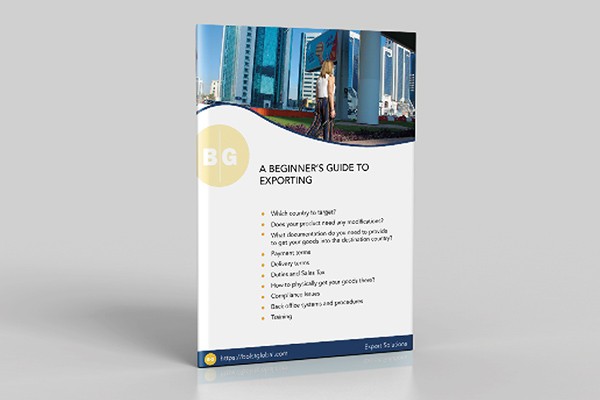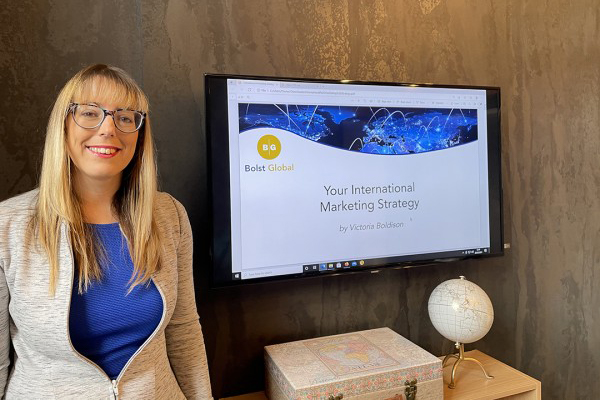Top Tips For Internationalisation

Six important considerations for your international marketing strategy
We’re all familiar with the abbreviation P&L from a financial perspective when talking about profit and loss, but there are other Ps and Ls to consider when establishing an international marketing strategy.
Building off the content of our on-demand tutorial, we’ll introduce you to six areas that you must consider when looking to expand your reach overseas and share additional resources that will help you develop your internationalisation efforts.
The 3 Ps
Price
There are two aspects when it comes to our first P:
Before embarking on an international go-to-market strategy, you need to be 100% sure that this is what you want for your business. Penetrating a new market is a costly exercise and requires long-term investment and commitment. Are you ready for this?
If you are, then there are a number of ways you may be able to seek financial support and grants through various organisations, especially if you are an SME. For UK businesses then you can check out where some current funding opportunities are available here. Bolst Global can help you navigate any grant applications used In conjunction with any of our support services that you wish to engage with. If you’re interested then do get In touch If you’d like to discuss this further.
When developing your international marketing strategy, be sure to think about how you’re going to price your products for export. You need to cover all bases here so make sure you think about this methodically.
People
For your business to succeed and survive overseas, you need to have the right people onboard, and have the right connections on the ground in your chosen market.
Internally, you need to get buy in from key stakeholders to ensure that your international efforts receive the same level of support as your domestic activities. An internal owner should be identified to drive international export for your business, usually a member of the senior management team.
In the early stages of Internationalisation there can also be benefits to bringing In external expertise In this area to support and grow your understanding of how to take your products out to export markets. Setting up the first few overseas partnerships and deals and ensuring you set off on the right road to long term success can be hugely beneficial.
You should also consider who you will have on your side in-market. Building connections is vital for international trade. Consider working with an experience local intermediary who can help you navigate the market confidently. Find out why you should be working with international business partners here.
Production
When producing goods for export you will need to allow for flexibility in your production process, being able to scale up or scale down to meet the needs of your international customers is key.
In the beginning you should expect to produce much smaller product runs than you may be used to. You may also have to adapt your packaging or over-sticker your product information depending on the legal requirements of your target market – more on this below.
Alternatives for your brand could be to source products from elsewhere or find private label solutions to help manage the production challenges that you could face.
The 3 Ls
Legal
Depending on your product or industry, there is likely to be a need to educate yourself on the relevant rules and regulations of your target market. Expect to be asked to present a variety of documents like certificates of origin or health certificates, etc.
You may also have to get your products registered or certified by the local authorities in order to sell in your new destination.
If you’re a UK-based company exporting overseas, then don’t forget about the new post-Brexit requirements needed when trading with the EU.
We see companies new to exporting being unsure about what to put on their standard export documents such as the Commercial Invoice. As such we have created a short on-demand tutorial explaining the key aspects to Include on your Invoice when shipping goods overseas which you can access here.
Logistics
Considering how you’re going to get your product to your overseas customers can get complicated. There are a number of aspects that need to be addressed, from the shipping method, storage and packaging to Incoterms and adequate insurance cover.
Labelling
Depending on where you are shipping your products to, there will be certain requirements when it comes to labelling and packaging. Make sure to investigate the local rules and regulations. Consignments can be rejected at customs if labels are not compliant.
Each country can have slightly different requirements, so if you’re planning on distributing your products across a few countries within a specific region, be sure to consider, and adhere to, the rules for each country.
If you’re thinking of targeting the Middle East, here’s a summary we put together for the different food and drink labelling requirements across the region.
At Bolst Global, we understand that there is no one-size-fits-all approach when it comes to internationalisation and that this can be a daunting subject for brands new to export.
If you need help establishing an international marketing or export strategy, then get in touch with our team to see how we can help. We can’t wait to hear from you.


